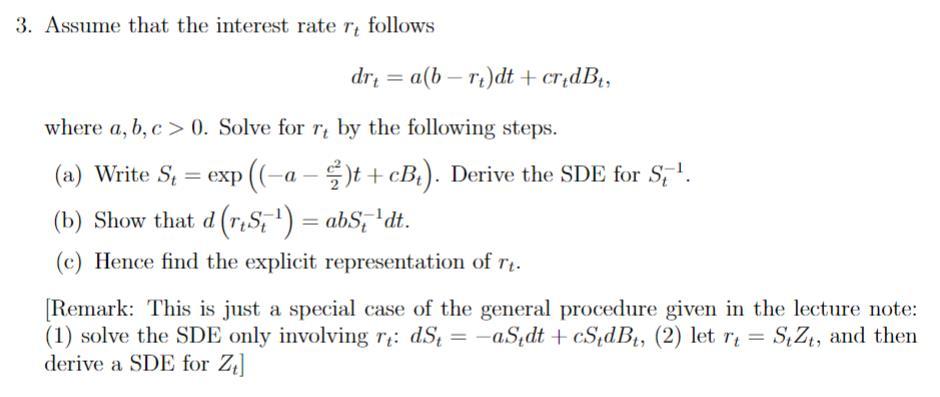Answered step by step
Verified Expert Solution
Question
1 Approved Answer
3. Assume that the interest rate rt follows drt=a(brt)dt+crtdBt, where a,b,c>0. Solve for rt by the following steps. (a) Write St=exp((a2c2)t+cBt). Derive the SDE for

Step by Step Solution
There are 3 Steps involved in it
Step: 1

Get Instant Access to Expert-Tailored Solutions
See step-by-step solutions with expert insights and AI powered tools for academic success
Step: 2

Step: 3

Ace Your Homework with AI
Get the answers you need in no time with our AI-driven, step-by-step assistance
Get Started


